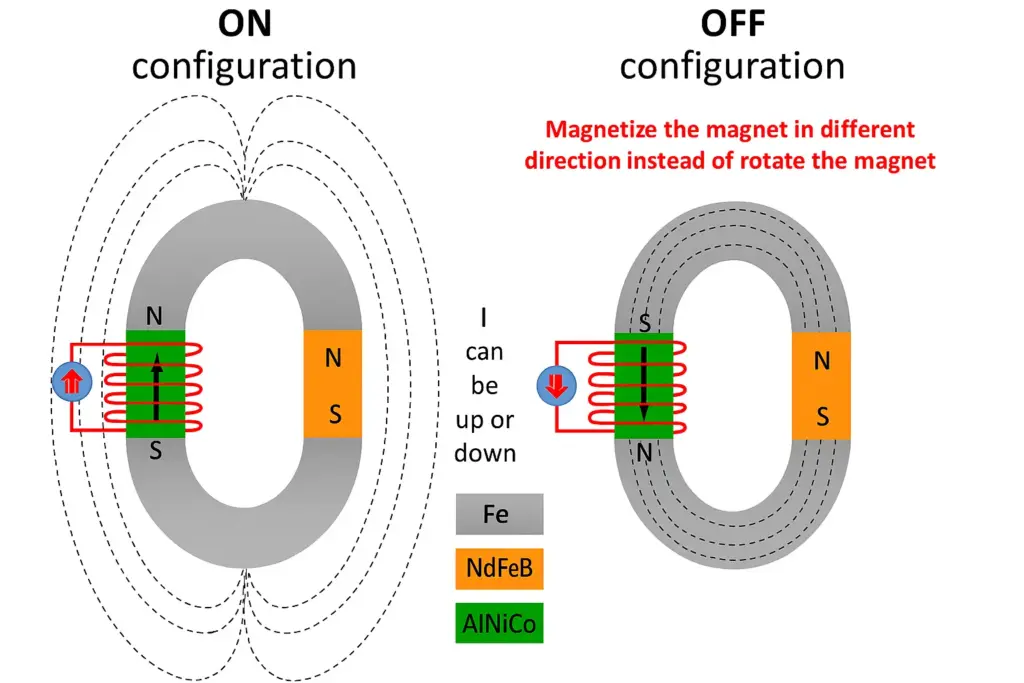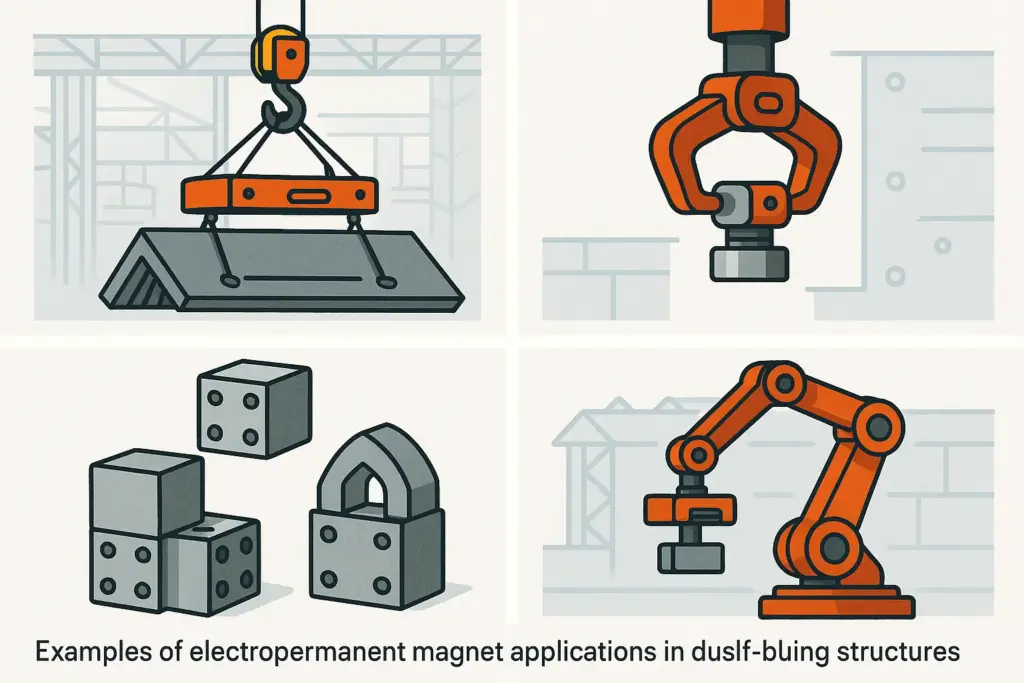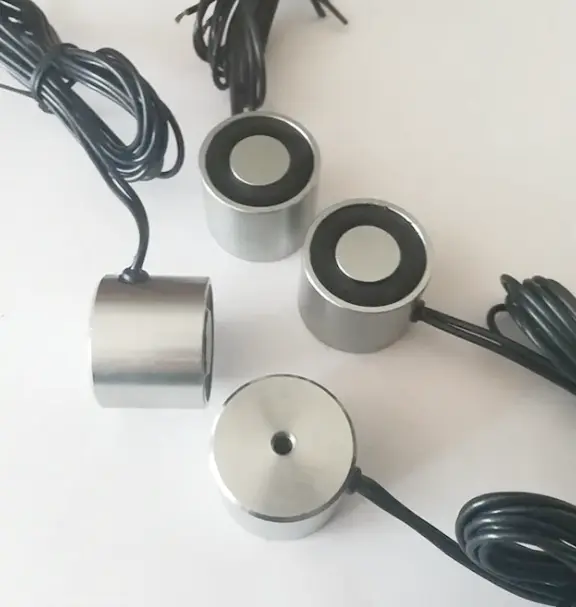An electropermanent magnet (EPM) is a type of permanent magnet that can be switched on or off using a brief pulse of electric current. Unlike traditional electromagnets, which require continuous power to maintain a magnetic field, EPMs use permanent magnets to generate a stable magnetic field without ongoing energy consumption. This makes them highly efficient for applications like industrial lifting magnets and innovative self-building structures.
In this guide, we’ll explore the definition, working principle, and applications of electropermanent magnets, highlighting their advantages over conventional magnetic systems.
What is an Electropermanent Magnet?
An electropermanent magnet consists of two key components:
- A hard magnetic material (high coercivity, e.g., NdFeB) that maintains a strong, stable magnetic field.
- A soft magnetic material (low coercivity, e.g., AlNiCo) whose magnetization direction can be reversed with a current pulse.
By controlling the magnetization of the soft material via a wire coil, the EPM can toggle its external magnetic field:
- On State: When the hard and soft materials’ magnetizations align, the EPM produces a strong external magnetic field.
- Off State: When their magnetizations oppose each other, the external magnetic field is nearly nonexistent.
This unique ability to switch the magnetic field without continuous power distinguishes EPMs from electromagnets, offering energy efficiency and reliability.

How Does an Electropermanent Magnet Work?
The principle of an EPM is based on a magnetic latch configuration, typically involving:
- Two permanent magnets (one hard, one soft).
- Two soft magnetic plates (e.g., iron alloy) that concentrate magnetic flux.
- A coil wound around the soft magnet to apply current pulses.
EPM Operation Explained
- On Configuration:
- Both magnets’ north poles are aligned (e.g., pointing up).
- The magnetic flux flows through the soft magnetic plates, creating a strong external magnetic field, similar to a large magnet with distinct north and south poles.
- This state is ideal for applications like lifting ferrous metals.
- Off Configuration:
- The soft magnet’s magnetization is reversed using a current pulse, so its poles oppose the hard magnet’s.
- The magnetic flux is confined within the soft magnetic plates, forming a closed circuit with minimal external magnetic field.
- This allows the magnet to release objects without mechanical intervention.
Magnetization Switching
A current pulse through the coil generates a magnetic field stronger than the soft magnet’s intrinsic coercivity (e.g., 50 kA/m for AlNiCo vs. 1120 kA/m for NdFeB). This flips the soft magnet’s magnetization direction without affecting the hard magnet, enabling the EPM to toggle between on and off states.
Advantages of Electropermanent Magnets
- Energy Efficiency: EPMs only require a brief current pulse to switch states, unlike electromagnets that consume continuous power.
- Reliability: The magnetic field is maintained by permanent magnets, ensuring stability without power sources.
- Versatility: EPMs are ideal for applications requiring precise control, such as industrial lifting, robotics, and programmable magnets for self-assembling structures.
Applications of Electropermanent Magnets
- Industrial Lifting Magnets:
- EPMs made with rare earth magnets (e.g., NdFeB) are used to lift heavy ferrous objects. The magnet can be turned off to release the load, improving safety and efficiency.
- Example: Magnetic Lifting Technologies (internal link to a related article).
- Self-Building Structures:
- Programmable EPMs enable self-assembling systems, where components align and connect autonomously using controlled magnetic fields.
- Example: Research into Programmable Magnetic Structures (internal link).
- Robotics and Automation:
- EPMs are used in robotic grippers for precise handling of metallic objects without continuous power consumption.

Electropermanent Magnet vs. Electromagnet
| Feature | Electropermanent Magnet (EPM) | Electromagnet |
|---|---|---|
| Power Consumption | Pulse-based (minimal) | Continuous |
| Magnetic Field Source | Permanent magnets | Electric current |
| Applications | Lifting, robotics, self-assembly | Broad, less efficient |
| Energy Efficiency | High | Low |
Conclusion
Electropermanent magnets (EPMs) offer a revolutionary approach to magnetic technology, combining the strength of permanent magnets with the control of electromagnets. Their ability to toggle magnetic fields with minimal energy makes them ideal for industrial, robotic, and innovative applications like self-building structures. By understanding the principles and advantages of EPMs, industries can leverage this technology for greater efficiency and precision.
Explore more about Magnetic Technologies and their applications in our blog.


Leave a Reply